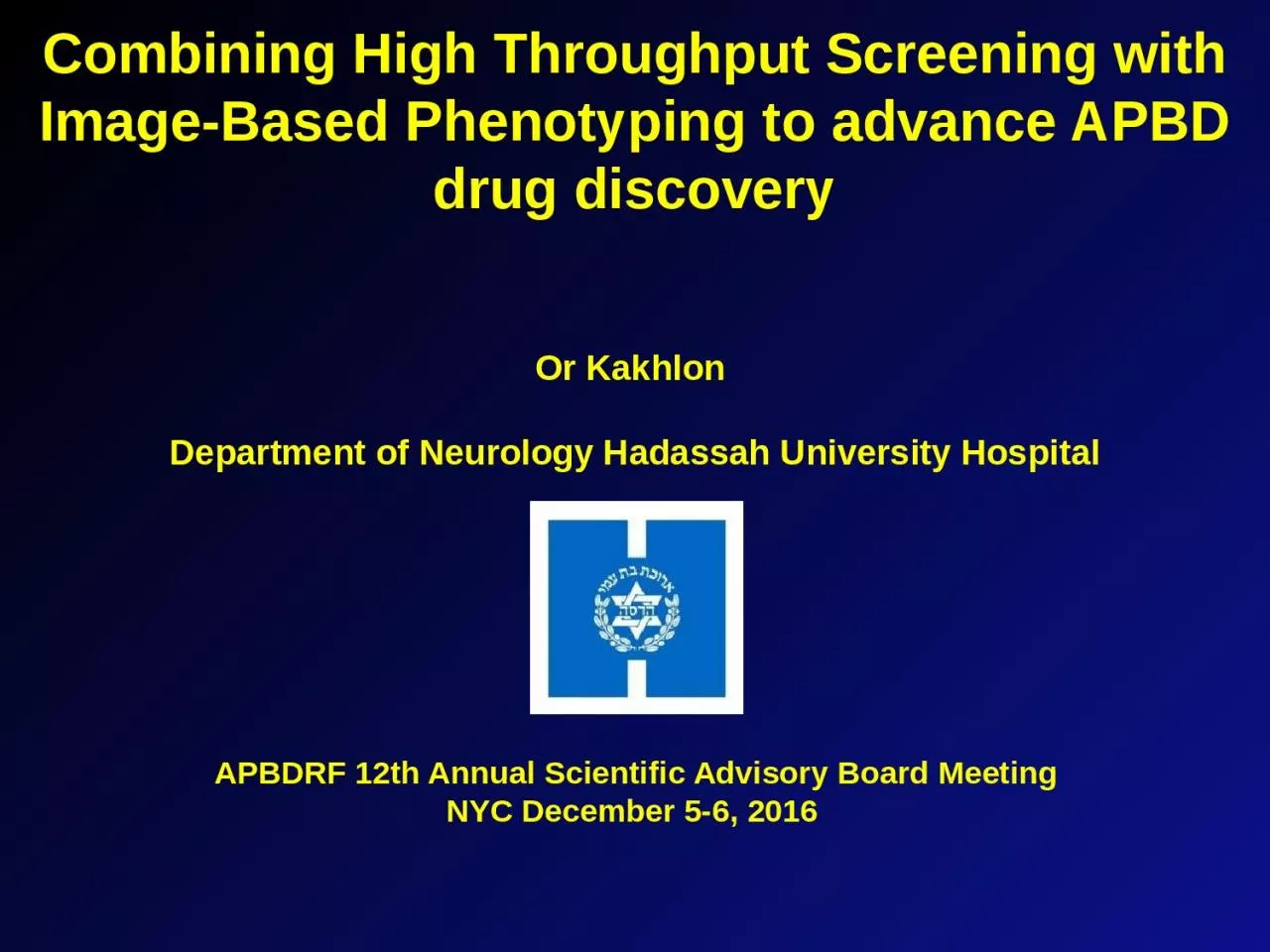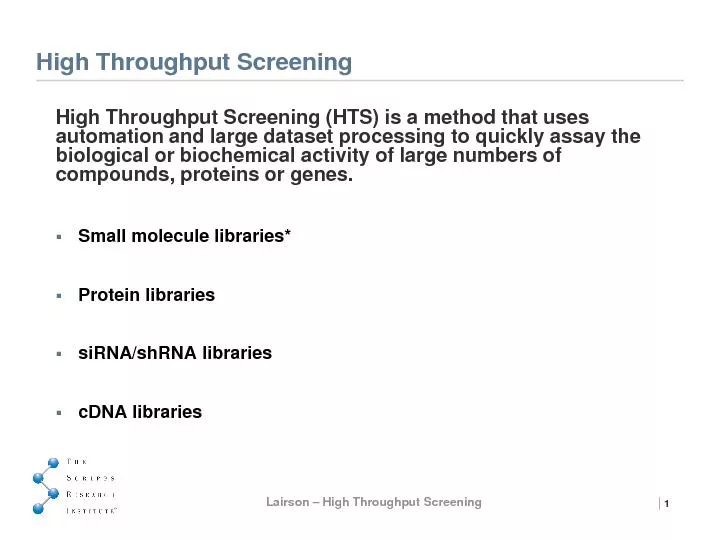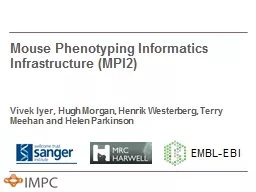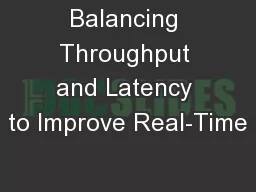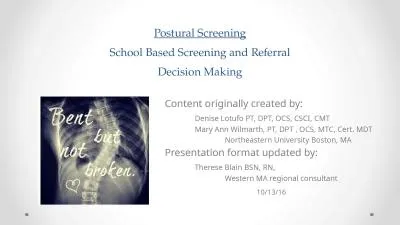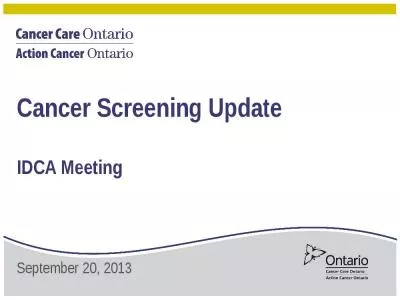PPT-Combining High Throughput Screening with Image-Based Phenotyping
Author : WiseWhale | Published Date : 2022-08-03
to advance APBD drug discovery Or Kakhlon Department of Neurology Hadassah University Hospital APBDRF 12th Annual Scientific Advisory Board Meeting NYC December
Presentation Embed Code
Download Presentation
Download Presentation The PPT/PDF document "Combining High Throughput Screening with..." is the property of its rightful owner. Permission is granted to download and print the materials on this website for personal, non-commercial use only, and to display it on your personal computer provided you do not modify the materials and that you retain all copyright notices contained in the materials. By downloading content from our website, you accept the terms of this agreement.
Combining High Throughput Screening with Image-Based Phenotyping: Transcript
Download Rules Of Document
"Combining High Throughput Screening with Image-Based Phenotyping"The content belongs to its owner. You may download and print it for personal use, without modification, and keep all copyright notices. By downloading, you agree to these terms.
Related Documents

